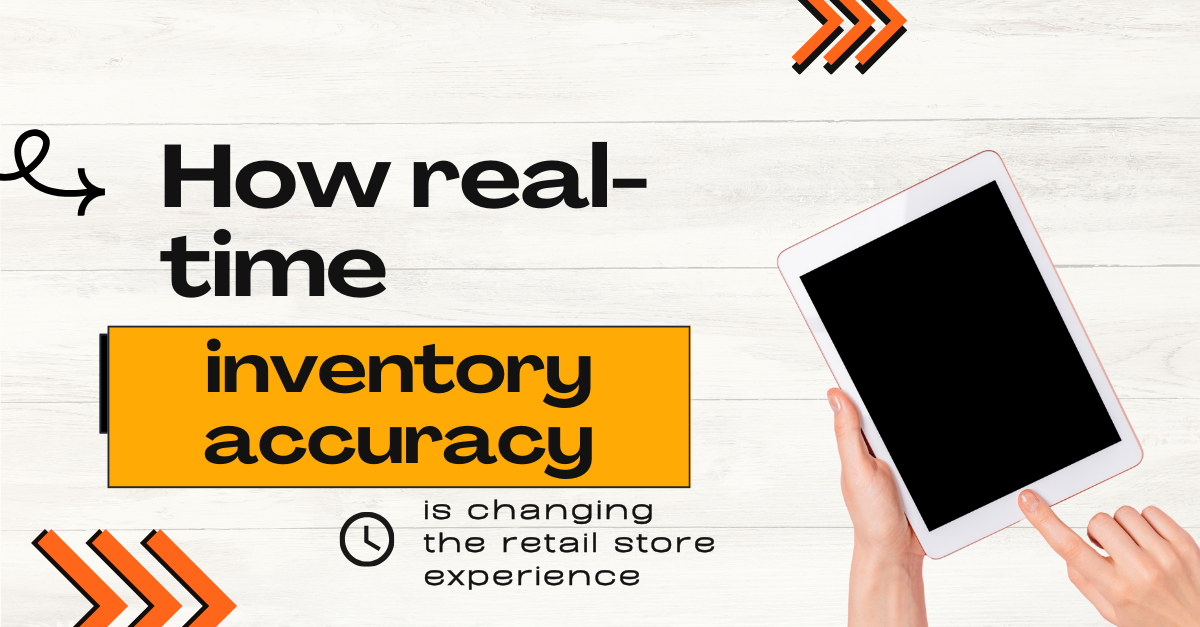


Remember when inventory management meant clipboards, manual counts and endless spreadsheets? Those of us who worked in retail a few decades ago can undoubtedly recall the quarterly inventory days — stores closed, all hands on deck, counting every item into the wee hours of the morning. While those marathon counting sessions created team camaraderie (and consumption of unprecedented amounts of pizza), they represented a fundamentally flawed approach to inventory management.
Today’s retail landscape has evolved dramatically, yet many retailers still operate with inventory accuracy that would have only been considered acceptable in the pre-digital era. According to Gartner’s Hype Cycle for Retail Technologies, store-level inventory accuracy can be as low as 60%, a figure that could be catastrophic in today’s omnichannel world.
When we talk about inventory inaccuracy, we’re discussing more than just a discrepancy between physical counts and system records. We’re talking about a cascading effect that impacts every facet of retail operations:
The most immediate consequence is the simplest — you can’t sell what you can’t find. But the ripple effect extends far beyond the immediate lost sale. Research shows that nearly half of customers facing a stockout will purchase from a competitor rather than wait or substitute.
In an era where consumer expectations are shaped by digital immediacy, nothing damages brand reputation faster than promising availability that can’t be delivered. Each inventory-related disappointment erodes the customer relationship, with 54% of shoppers reporting they’re less likely to return to a retailer after a negative brand experience.
Store associates spend a great deal of time searching for products they believe should be in stock. This “inventory hunt” represents one of retail’s most significant productivity drains. It’s time that could be spent engaging with customers and driving sales.
Attempting to compensate for poor inventory visibility by overstocking creates its own set of problems — tying up working capital, increasing carrying costs and often leading to markdown spirals that erode margins.
Perhaps most critically, inventory inaccuracy undermines the omnichannel capabilities that modern consumers demand. Buy Online Pickup In Store (BOPIS) and Ship from Store (SFS) operations simply cannot function reliably without near-perfect inventory visibility.
The good news is that we now have access to technology that’s making unprecedented inventory accuracy not just possible but practical.
Twenty years ago, achieving 95% inventory accuracy required herculean efforts and significant labor investment. Today, modern RFID technology, coupled with intelligent inventory platforms, can deliver 98-99% accuracy while simultaneously reducing labor requirements.
This is possible through several key technological advancements:
Fixed ceiling readers provide continuous inventory visibility, automatically updating stock levels without human intervention. These systems deliver near real-time inventory data, enabling dynamic replenishment triggers and instant verification of stock positions.
More affordable and flexible than fixed systems, modern handheld RFID readers can scan hundreds of items per second, making comprehensive daily inventories practical even in large-format stores. What once took days now takes hours or even minutes.
Machine learning algorithms now identify inventory discrepancies before they become problems, recognizing patterns that suggest theft, processing errors or merchandising issues.
Modern inventory management embraces a hybrid approach of continuous monitoring for high-value or high-turn items combined with intelligent random sampling for broader assortments.
RELATED READ: Retail Inventory Management, Simplified
The compelling ROI for investing in inventory accuracy comes from both operational improvements and enhanced customer experiences.
For retail executives considering how to elevate their inventory accuracy, we recommend a phased approach:
The retailers seeing the greatest success are those who view inventory not as a back-office function but as a strategic asset that powers customer experiences and business growth.
Looking ahead, we’re seeing the emergence of truly intelligent inventory systems. These are solutions that don’t just track products but understand their context in the customer journey. Such platforms will integrate seamlessly with your current tech stack, creating stores where inventory management becomes invisible yet perfectly precise.
Imagine shelves that know when they’re being depleted, fitting rooms that recognize which items enter and exit, and AI systems that predict inventory needs based on weather patterns, local events and social media trends. The retailers who will thrive in this new era are those who recognize that inventory accuracy isn’t just a financial necessity. It’s the foundation of the seamless, friction-free experiences that customers increasingly demand.
In a world of endless shopping options, the retailers who can confidently say “yes, we have that” and deliver on that promise will be the ones who earn customer loyalty and market leadership.